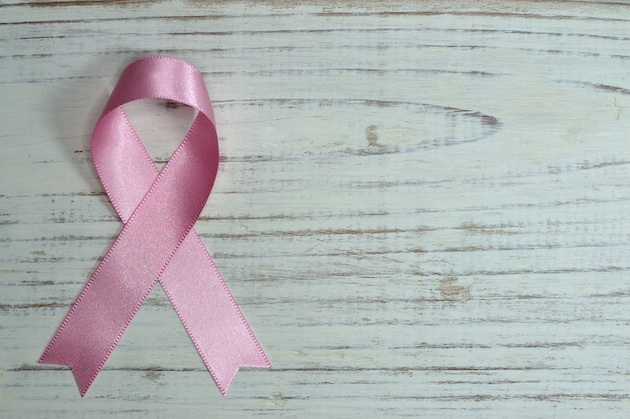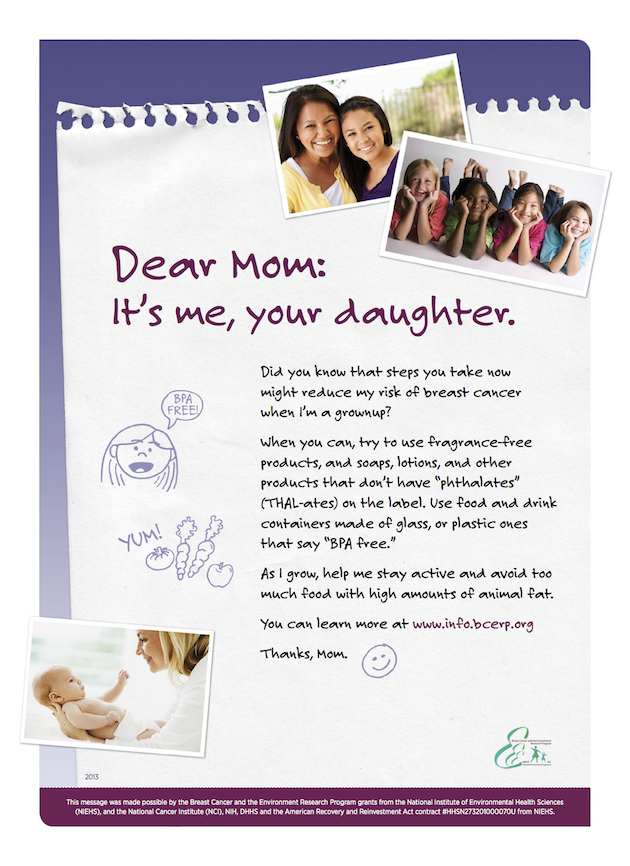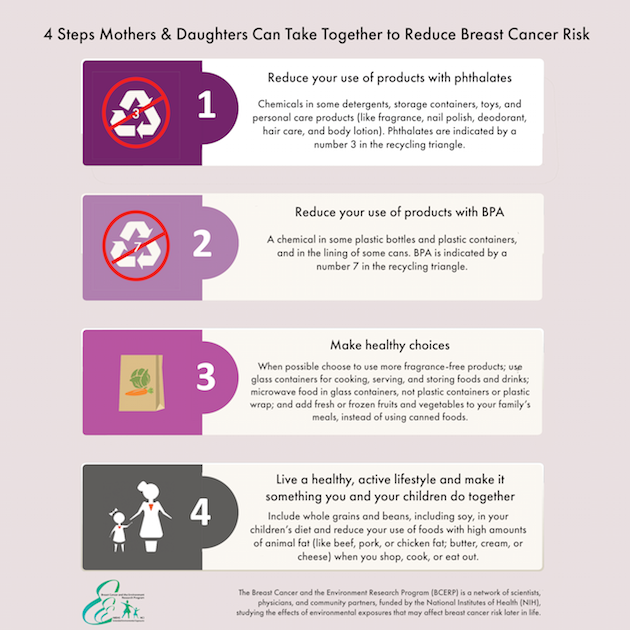Earlier this week, one of my close friends had an abnormal mammogram. As you can imagine, the fear and anxiety she faced as she underwent further testing felt unbearable. With a positive family history and several risk factors, she had reason to be concerned. Fortunately for her, it was determined that her abnormal mammogram was not the result of breast cancer. With the incidence of breast cancer among women 1 in 8, this is a topic that warrants discussion. Women need to understand their breast cancer risk and how to mitigate it.
This is a sponsored post in partnership with Breast Cancer and the Environment Research Program.

What is Breast Cancer?
Cancer is the broader term used to identify diseases characterized by abnormal cells that grow and invade healthy cells within the body (National Breast Cancer Foundation). Specifically, breast cancer originates in the cells of the breast that can invade surrounding tissues or spread to other areas of the body.
The Facts About Breast Cancer
Because of the prevalence of this disease, it is important for women to understand the facts in order to make prudent decisions for themselves and their family.
Breast cancer is the most commonly diagnosed cancer in women and is the second leading cause of cancer death among women. And while the incidence is high, it should be noted that there are over 3.3 million breast cancer survivors in the US today.

What Causes Breast Cancer?
Unfortunately, research has not been able to determine an exact cause for breast cancer. Breast cancer, like other cancers, is cause by damage to a cell’s DNA. Since we ultimately do not know what causes breast cancer, understanding risk if vital.
Understanding Your Breast Cancer Risk
As the most common cancer among women, gender is understandably a significant risk factor with women diagnosed 100 times more often than men. Age, race, family history, genetics, and health history all contribute to an increased risk of breast cancer:
- Age: Women are more likely to be diagnosed with invasive breast cancer after the age of 55
- Race: The incidence of breast cancer is increased among Caucasian women
- Family History: Women who have a family member (mother, sister, father, child) that was diagnosed with breast or ovarian cancer have a higher risk of developing the disease. The risk increases if the relative was diagnosed before the age of 50.
- Health History: Women who have been diagnosed with breast cancer in one breast have an increased risk of a second diagnosis in the other breast. Additional risk factors include the presence of abnormal breast cells, early menstruation (before the age of 12), late menopause (after the age of 55), having a first child at an older age and never undergoing pregnancy and childbirth.
- Genetics: Women with positive BRCA1 or BRCA2 gene are at an increased risk of being diagnosed with breast cancer.
- Dense Breast Tissue: Women with dense breast tissue are at an increased risk of developing breast cancer. It is also more difficult to detect lumps in women with dense breast tissue.
How to Lower Your Breast Cancer Risk
While there are many risk factors that cannot be changed, scientists, physicians and community partners in the Breast Cancer and the Environment Research Program (BCERP), in partnership with the National Institutes for Health (NIH) are studying the relationship between exposure to certain chemicals and foods and breast cancer risk. Specifically, they are conducting research to determine if these exposures change how a girl’s body matures and impacts her future risk of developing breast cancer. While the research is not definitive, I have worked to eliminate our family’s exposure to certain foods and chemicals in an attempt to lower our risk for cancers, including breast cancer. Some of the things we have done include using organic, fragrance free products on our body and in our home and minimizing the use of the microwave, specifically when it comes to plastic. We have always placed a high priority on a healthy diet and physical activity but I continue to make adjustments as new information is revealed.
Here are steps women and their daughters can take to lower their breast cancer risk:
- Opt for fragrance-free products and products free from phthalates
- Use glass containers for cooking, serving and storing foods and drinks to reduce exposure to BPA
- Microwave food in glass containers (avoid plastic containers and plastic wrap)
- Include fresh and frozen fruits and vegetables in your diet.
- Include whole grains and beans in your diet
- Avoid canned foods
- Avoid foods with high amounts of animal fat (beef, pork, chicken fat, butter, cream, cheese)
- Maintain physical activity
Early Detection Can Increase Survival Rates
While many women are diagnosed with breast cancer after the identification of symptoms (i.e. a palpable lump), it is not uncommon for women with breast cancer to be symptom free. Monthly self breast exams, annual clinical breast exams and annual screening mammograms (after the age of 40) are essential in diagnosing breast cancer early when the tumor is localized and has not spread to other parts of the body.

How You Can Help
Scientists, physicians, and community partners in the Breast Cancer and the Environment Research Program (BCERP), which is supported by the National Institutes of Health (NIH), study the effects of environmental exposures on breast cancer risk later in life. They created a mother-daughter toolkit (http://bit.ly/BCERPtoolkit) mothers can use to talk to daughters about steps to take together to reduce risk.
Additionally, they are continuing their research on the link between environmental exposures and breast cancer. I encourage you to take their short survey to help further their research efforts about these possible correlations.
- Discover Luxury at Sonesta Irvine: Your Ideal Staycation - August 8, 2024
- CHOC Walk Returns to the Disneyland Resort – Special Events and Ways to Support - June 28, 2023
- Beastly Ball Returns to the Los Angeles Zoo - May 8, 2023



Leave a Reply